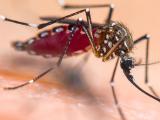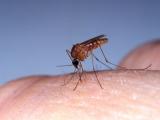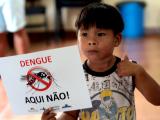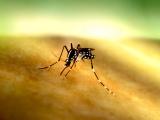Jan 16, 2013 (CIDRAP News) – The world has made "unprecedented" progress in the last few years in the battle against neglected tropical diseases (NTDs), with two maladies targeted for eradication within the next 7 years, the World Health Organization (WHO) said in a report released today.
The WHO has set its sights on eradicating guinea-worm disease (dracunculiasis) in 2015 and doing the same to yaws by 2020, according to the report. Five other diseases are targeted for elimination—stopping transmission in a defined region—in 2015.
The diseases are two of 17 NTDs on the WHO list, all of them infections that are or were common in tropical regions where poverty is widespread.
The campaign against the diseases has gained momentum since the WHO issued its first report on the topic in 2010 and especially since the "London declaration" on NTDs was signed a year ago, the agency said. The declaration spurred commitments by affected countries, global health initiatives, funding agencies, philanthropists, drug companies, and the scientific community.
"The prospects for success have never been so strong," WHO Director-General Margaret Chan, MD, said in a foreword to the report. "Many millions of people are being freed from the misery and disability that have kept populations mired in poverty, generation after generation, for centuries.
"We are moving ahead towards achieving universal health coverage with essential health interventions for neglected tropical diseases, the ultimate expression of fairness. This will be a powerful equalizer that abolishes distinctions between the rich and the poor, the privileged and the marginalized, the young and the old, ethnic groups, and women and men."
The NTDs include nine diseases caused by microbial pathogens such as bacteria, viruses, and protozoans; examples are Chagas disease, dengue, leishmaniasis, leprosy, rabies, and trachoma.
Another nine diseases on the WHO list are caused by "macroparasitic" pathogens, mostly worms. They include dracunculiasis, cystercicosis, echinococcosis, schistosomiasis, and soil-borne helminthiases, among others.
"Eradication of guinea worm is in sight," the WHO said in a press release. The infection is a crippling disease caused by a long, thread-like worm that people contract by drinking water contaminated with infected water fleas. Only 521 cases were reported from January through September of 2012, compared with 1,006 cases for the same period in 2011, the agency said.
In the 1980s guinea-worm disease was endemic in 20 countries, but by 2011 it was confined to four: South Sudan, Chad, Ethiopia, and Mali. No medicine or vaccine is effective against the disease, but the WHO believes it can be eradicated through a set of public health measures.
Yaws, the most common of three diseases caused by Treponema bacteria, was greatly reduced in the 1950s and 1960s, but it resurged in the 1970s after efforts flagged, the report says. The disease mainly afflicts children and is not fatal but can cause crippling and disfiguring deformities.
The disease can be effectively treated with a single oral dose of azithromycin or, if that's not available, a single injection of long-acting benzathine benzylpenicillin, the report says. "Consequently, yaws has been targeted for eradication by 2020."
The agency plans to launch the eradication drive with large-scale treatment drives in parts of Cameroon, Ghana, Indonesia, Papua New Guinea, the Solomon Islands, and Vanuatu. The experience gained in those efforts will guide further steps.
In other observations, the report says rabies has been eliminated in several countries through dog vaccination campaigns, and the WHO is "eyeing" regional elimination by 2020.
Chan commented that many of the diseases persist in the same countries, which "emphasizes the need to deliver preventive chemotherapy as an integrated package." She said funding is increasingly designated for programs involving integrated delivery of drugs for multiple NTDs.
In 2010, 711 million people received treatment for at least one of four diseases (lymphatic filiariasis, onchocerciasis, schistosomiasis, and soil-borne helminthiases) that are marked for preventive chemotherapy with single-dose medicines, according to the WHO press release.
One disease that is a long way from elimination or control is dengue, caused by a mosquito-borne virus. In 2012 it ranked as the fastest-spreading vector-borne viral disease, with a 30-fold increase in the past 50 years, the report notes. More than 125 countries reported dengue cases last year, and in 2011 there were more than 2 million cases, with 4,248 deaths.
The WHO's dengue goals include reducing deaths by 50% and cases by 25% by 2020, using 2010 numbers as the baseline, the report says. There is no specific treatment and no vaccine for the disease, although vaccines are in development.
"The world needs to change its reactive approach and implement sustainable preventive measures" for dengue, such as surveillance and outbreak response, mosquito control, and future vaccine implementation, the agency said.
See also:
Jan 16 WHO press release
WHO access page for full 152-page report
Brief descriptions of the 17 NTDs



















